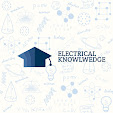PIEZOELECTRIC EFFECT
PIEZOELECTRIC EFFECT
Piezoelectric Effect
Piezoelectric
Effect or Piezoelectric property of a material refers to the ability to induce
opposite charges at two faces (correspondingly, to exhibit a voltage difference
between the faces) of the material as a result of the strain due to mechanical
force (either tension or compression) applied across the surfaces. This process
is also reversible in the sense that a mechanical strain would be experienced
in the material when subjected to opposite electric charging at the two faces
by means of an applied potential.
In the event of such an applied voltage being
alternating, the material specimen will experience vibrations. Likewise, an
applied vibration on the specimen would induce an alternating potential change
between the two faces. The most commonly known materials that exhibit
piezoelectric properties are natural materials like quartz and a number of
crystalline and polycrystalline compounds.
The strain versus the electric phenomenon
perceived in piezoelectric materials is dictated by a coefficient that has
components referred to a set of orthogonal coordinate axes (which are
correlated to standard crystallographic axes). For example, denoting the
piezoelectric coefficient (ratio between piezoelectric strain component to
applied electric field component at constant mechanical stress or vice versa)
as dmn, the subscript n (1 to 3) refers to the three euclidian orthogonal axes,
and m = 1 to 6 specifies the mechanical stress-strain components. The unit for
dmn is meter/volt which is the same as coulomb/newton. In the piezoelectric
phenomenon, there is an electromechanical synergism expressed as a coupling
factor K defined by K2, which quantifies the ratio of mechanical energy
converted into electric charges to the mechanical energy impressed on the
material. Being a reversible process, a relevant inverse ratio is also
applicable.


No comments:
If you have any doubts, please let me know